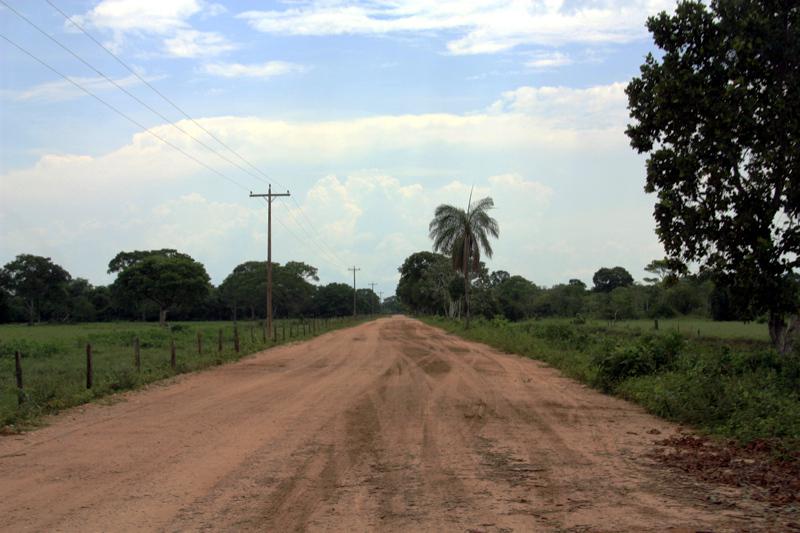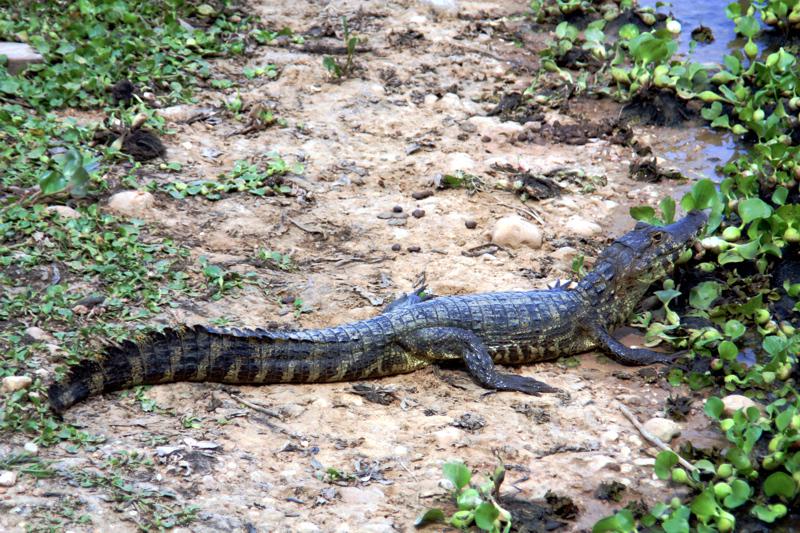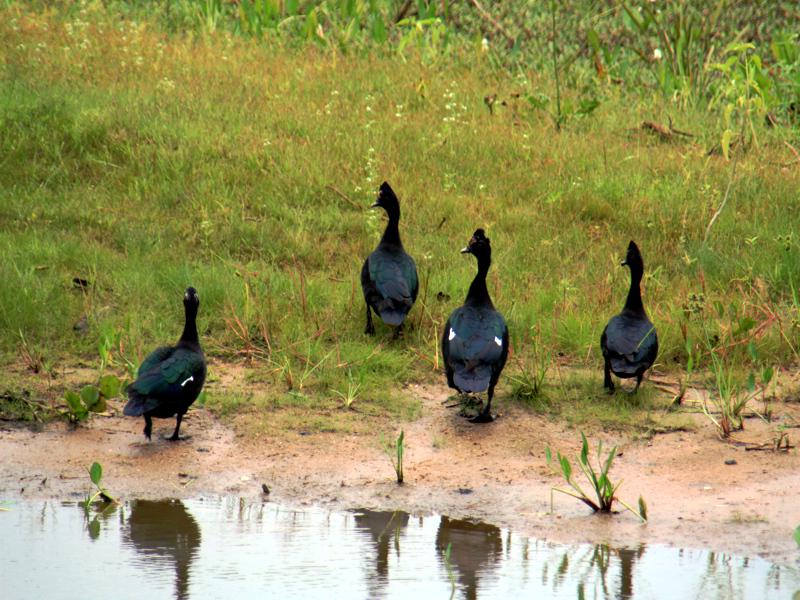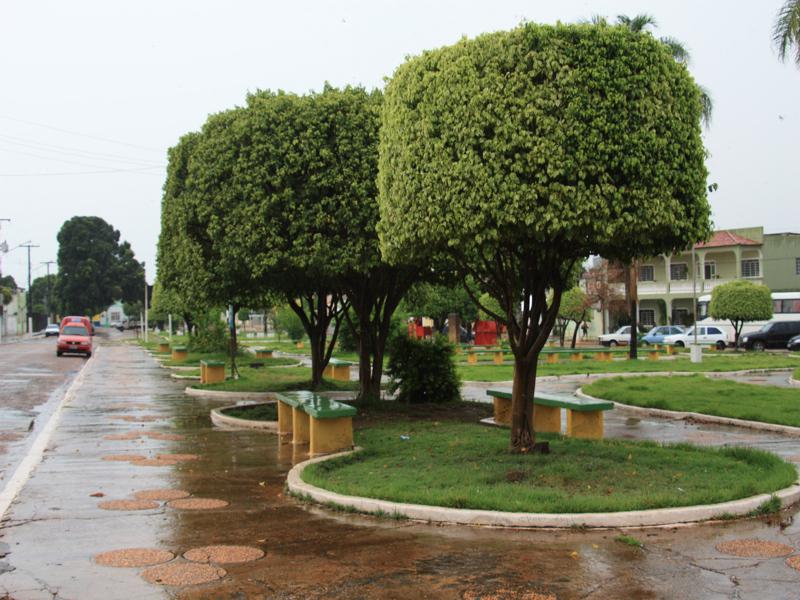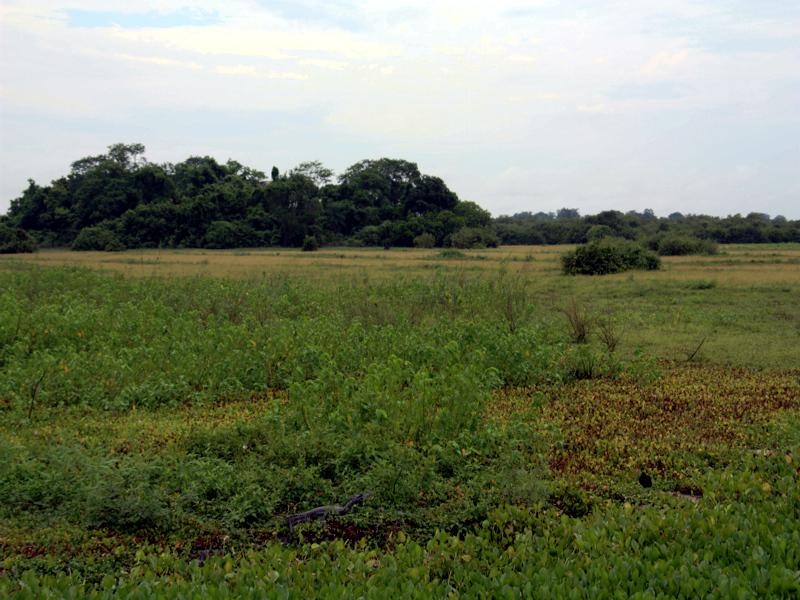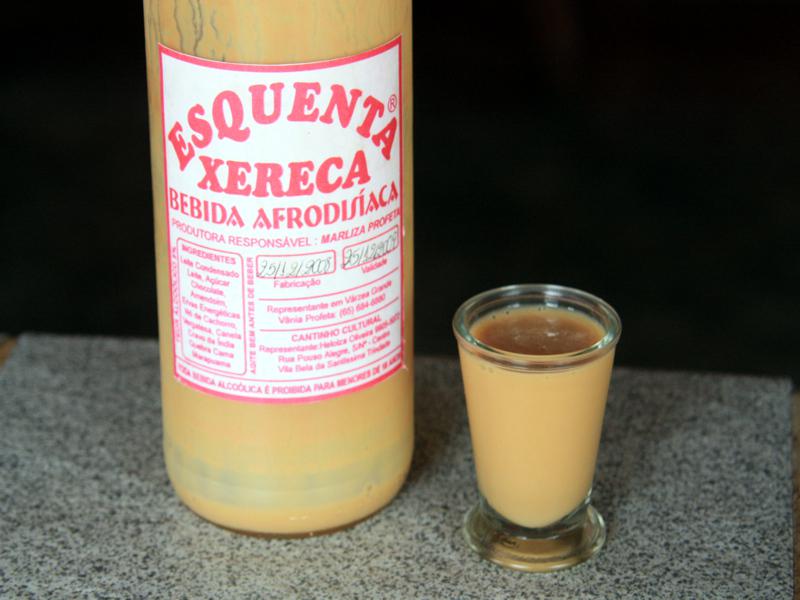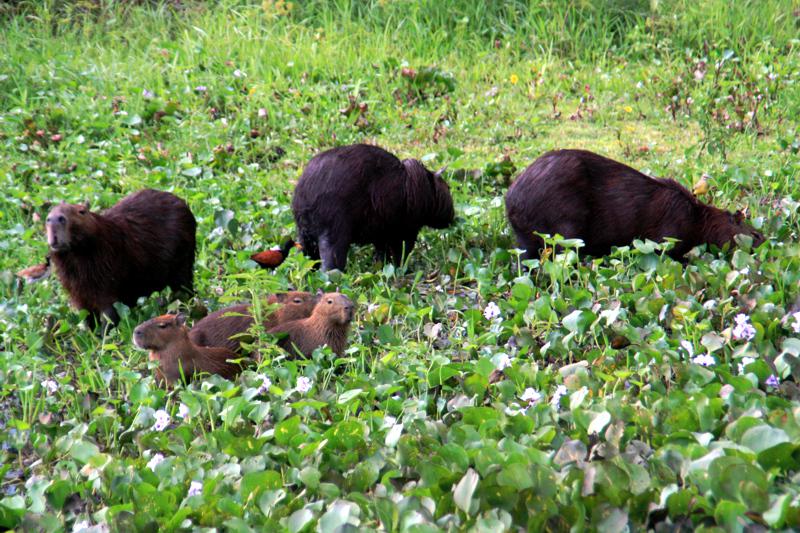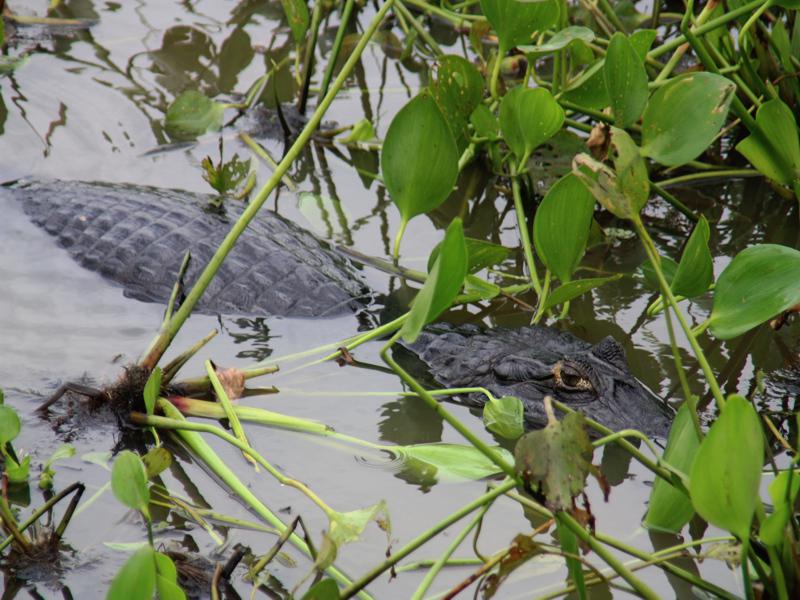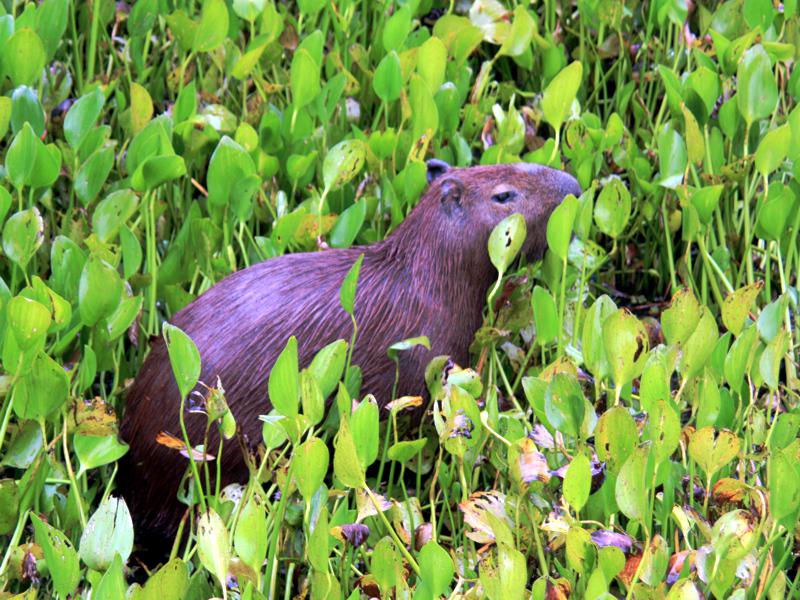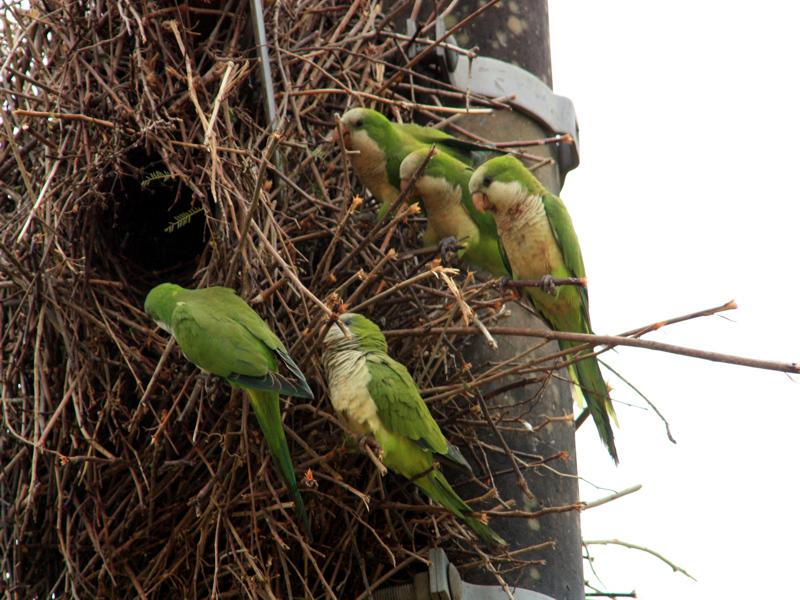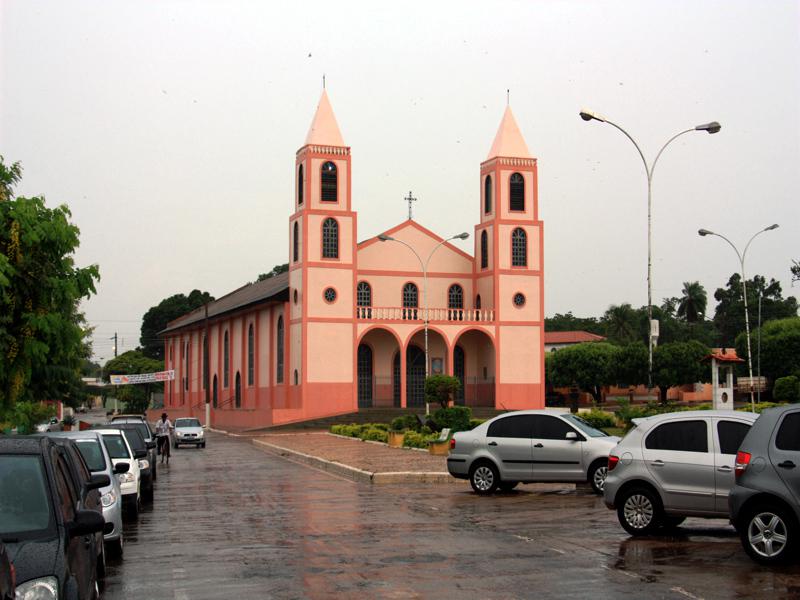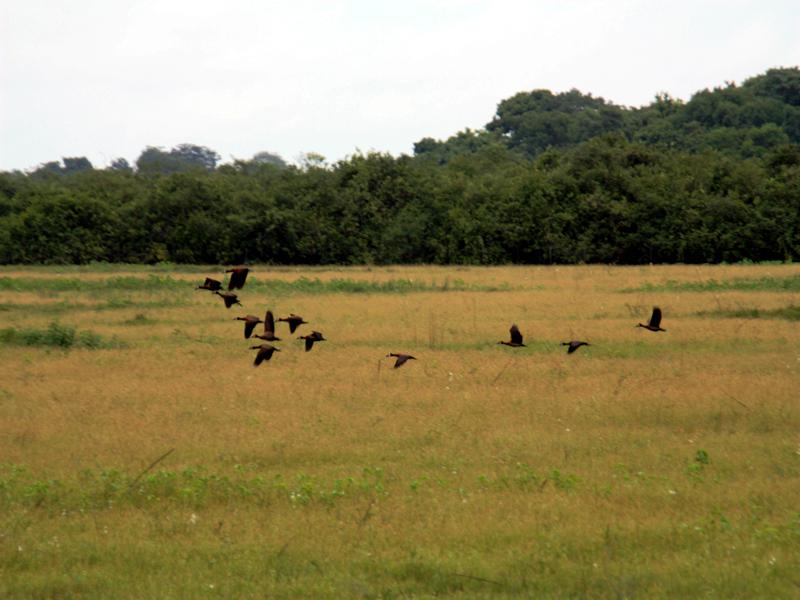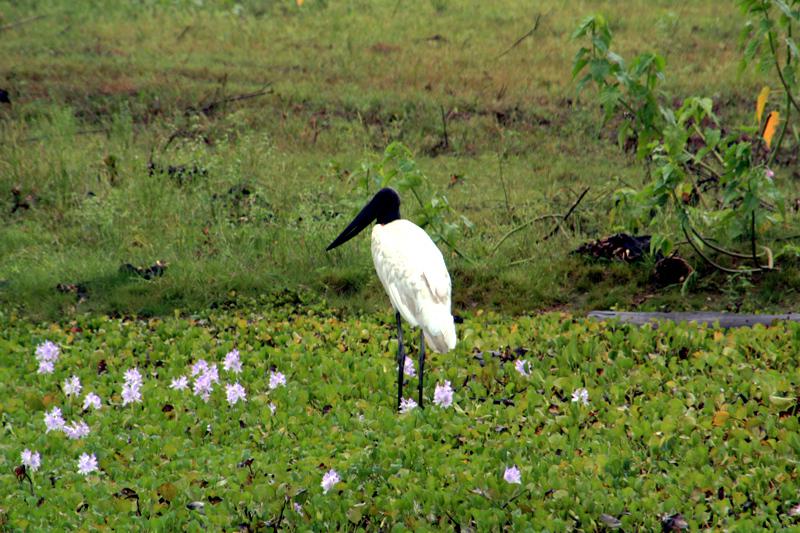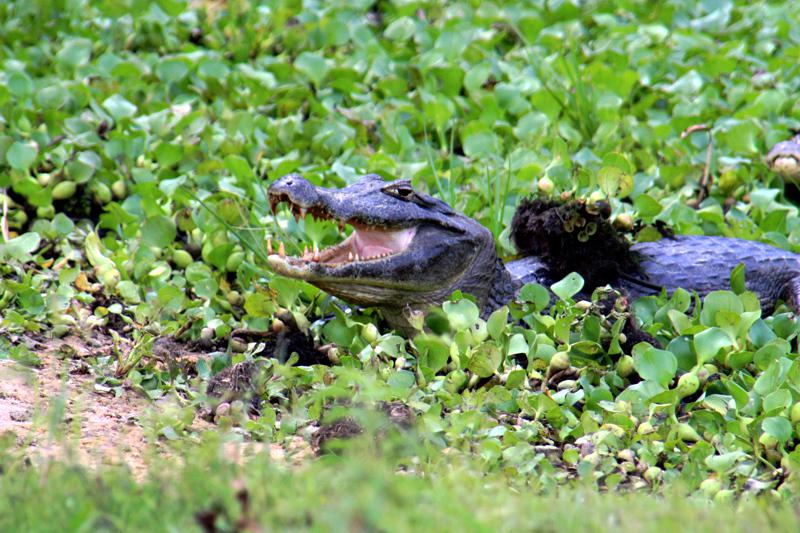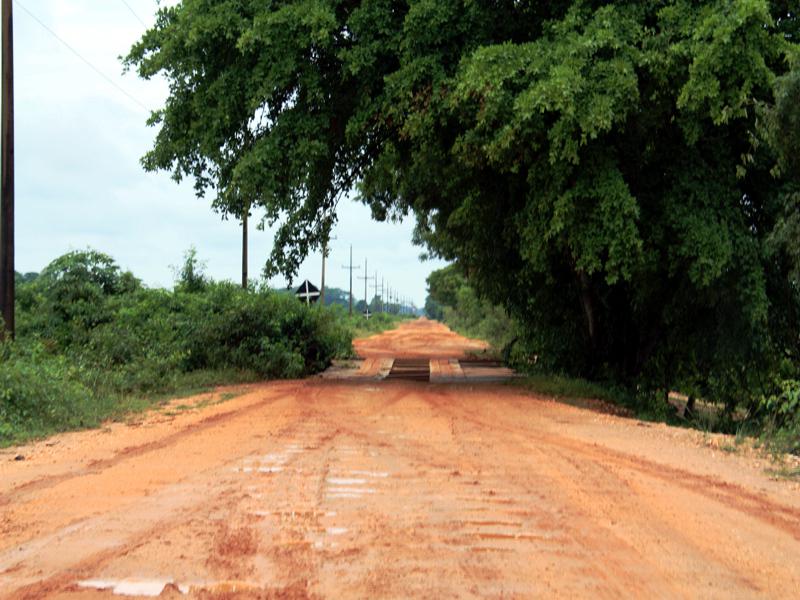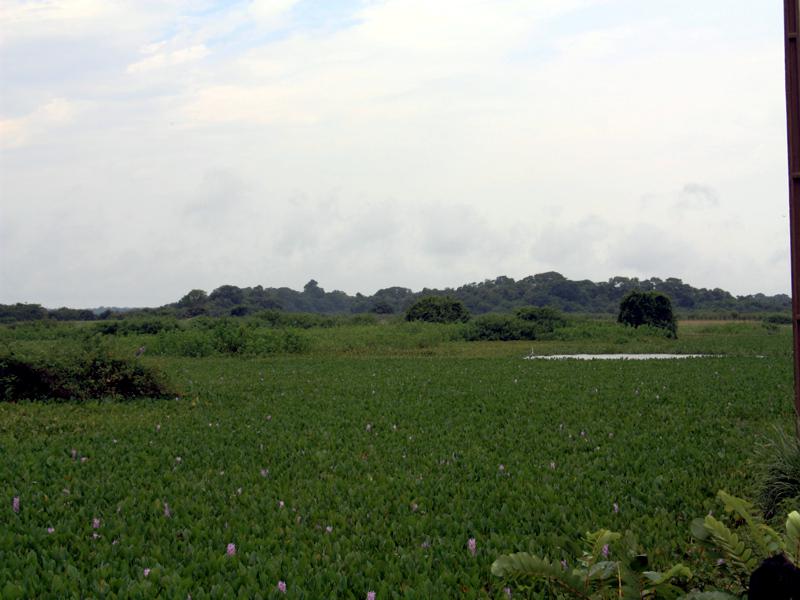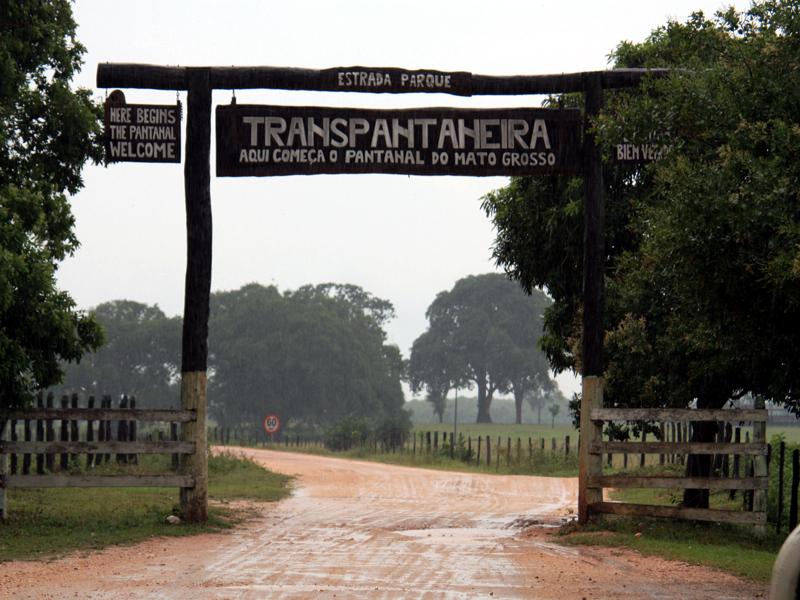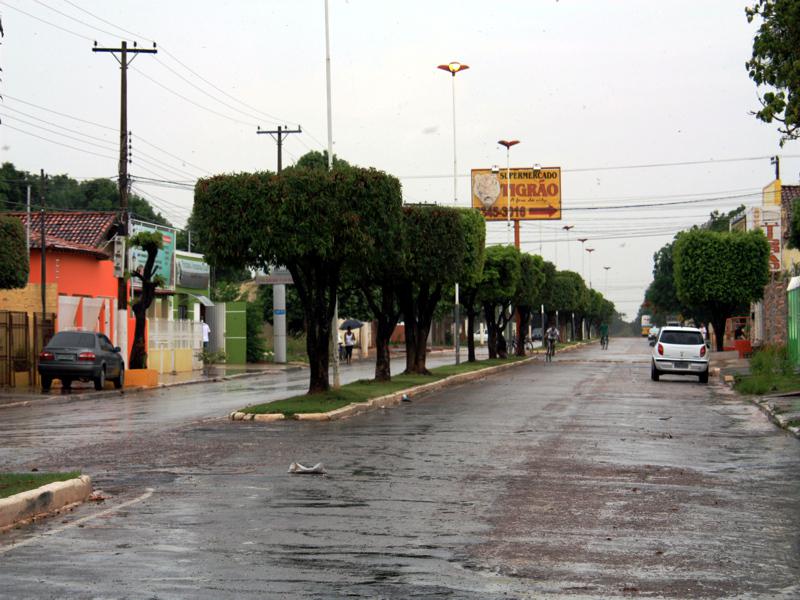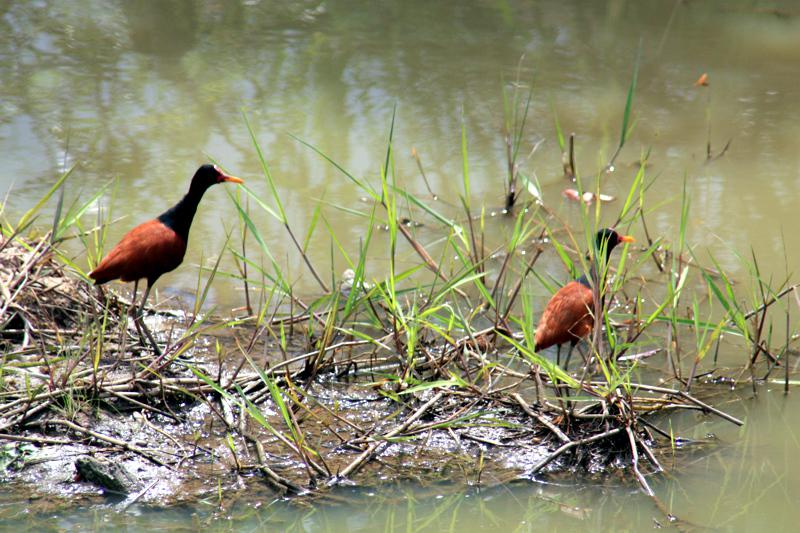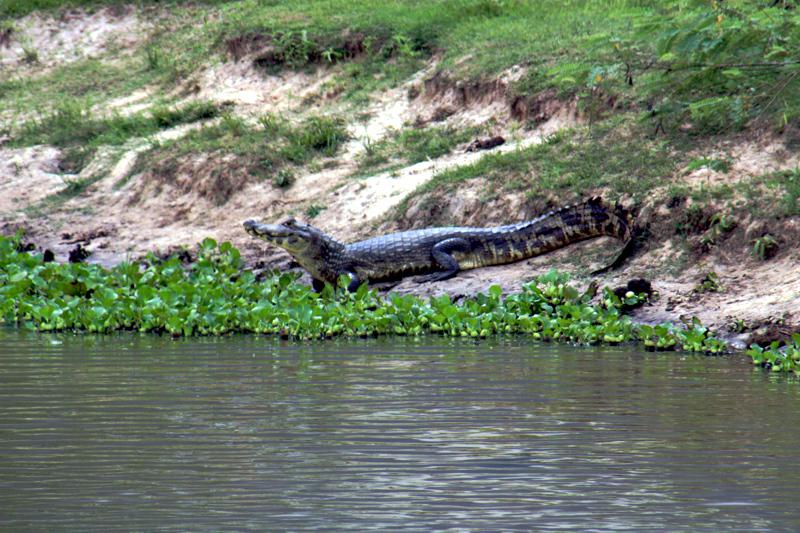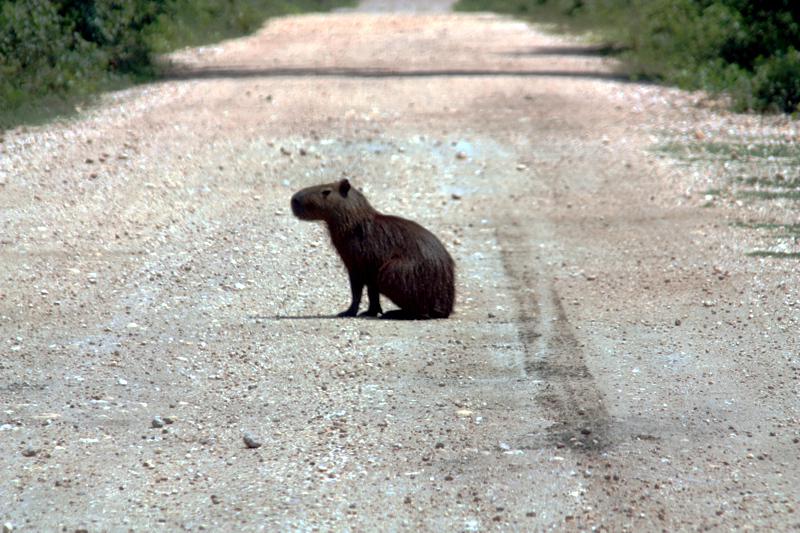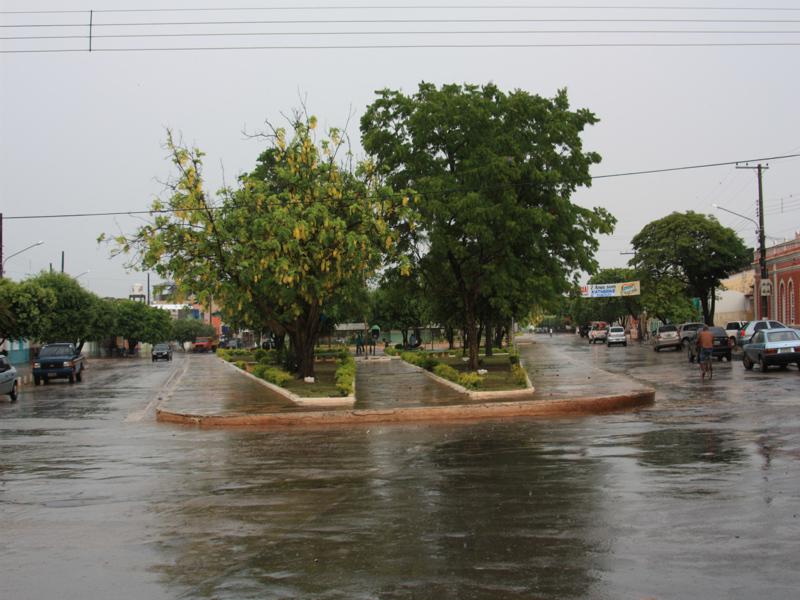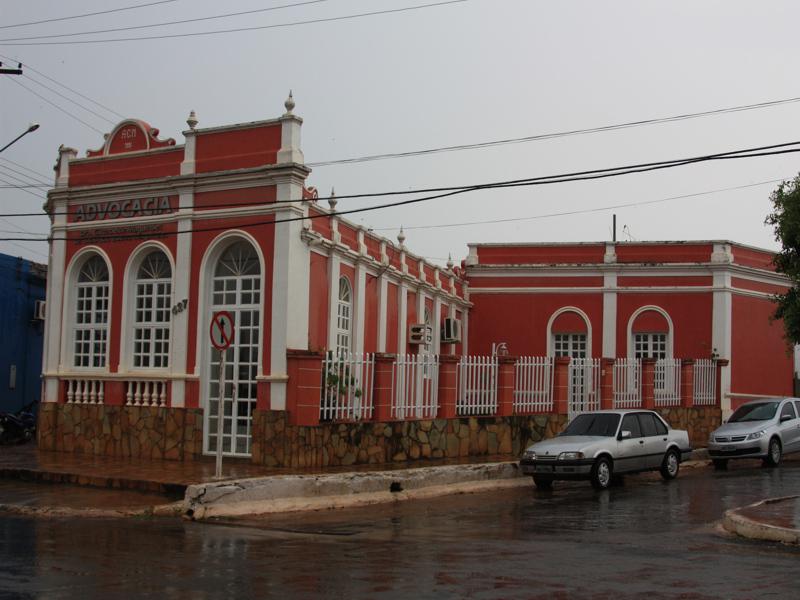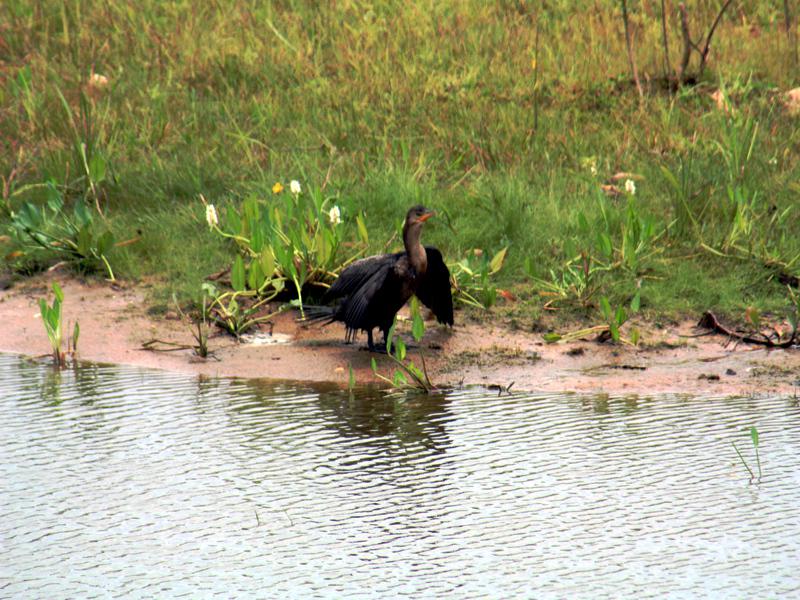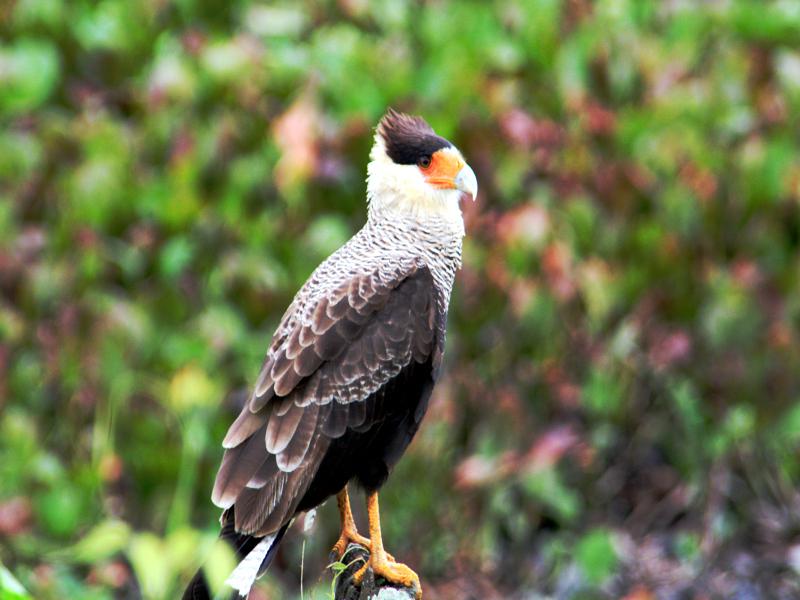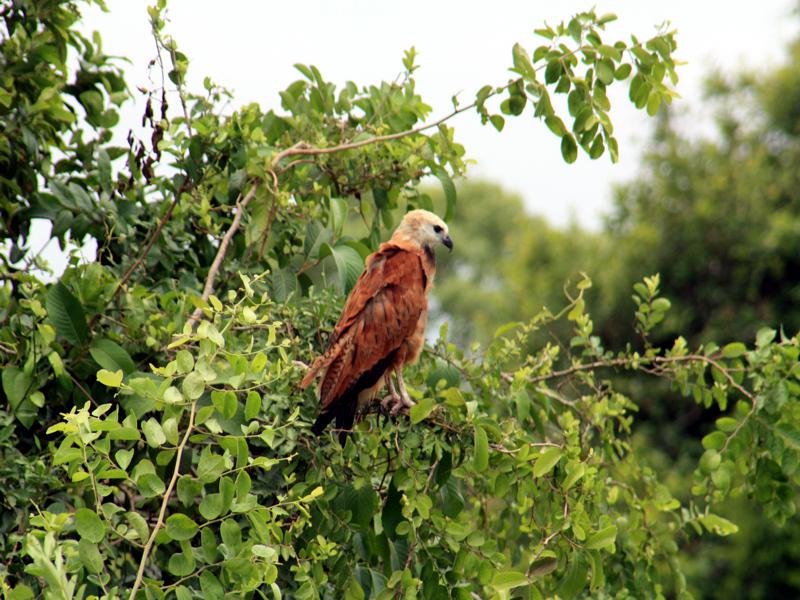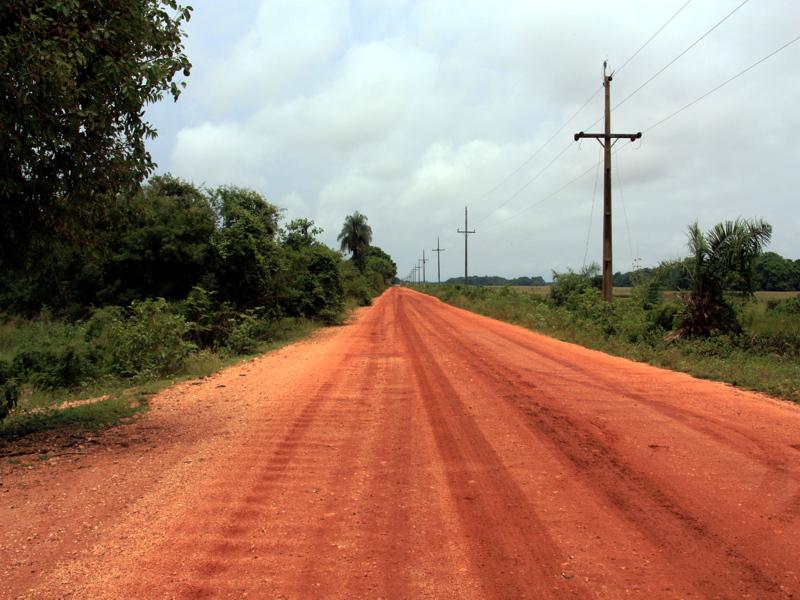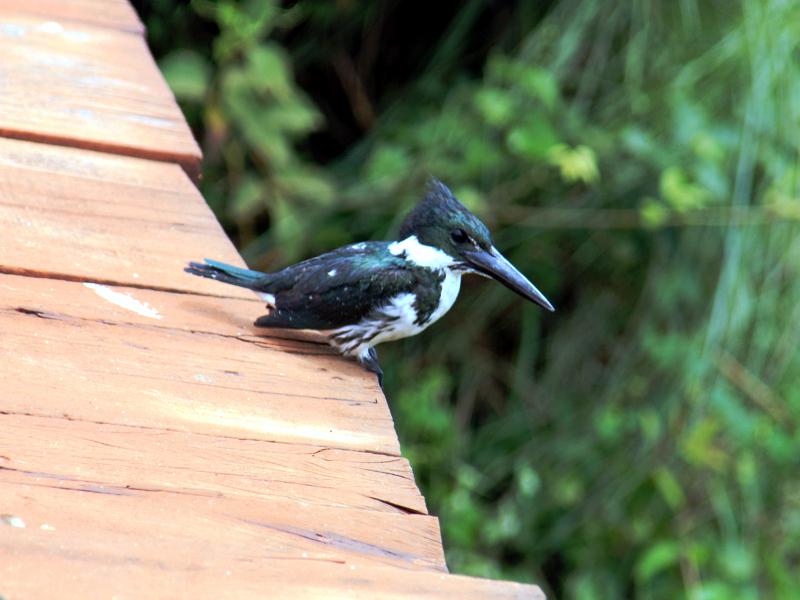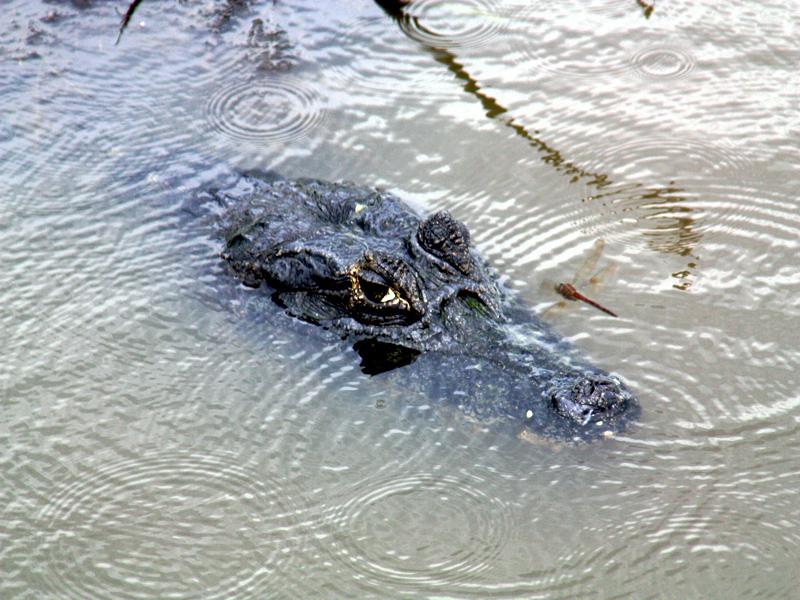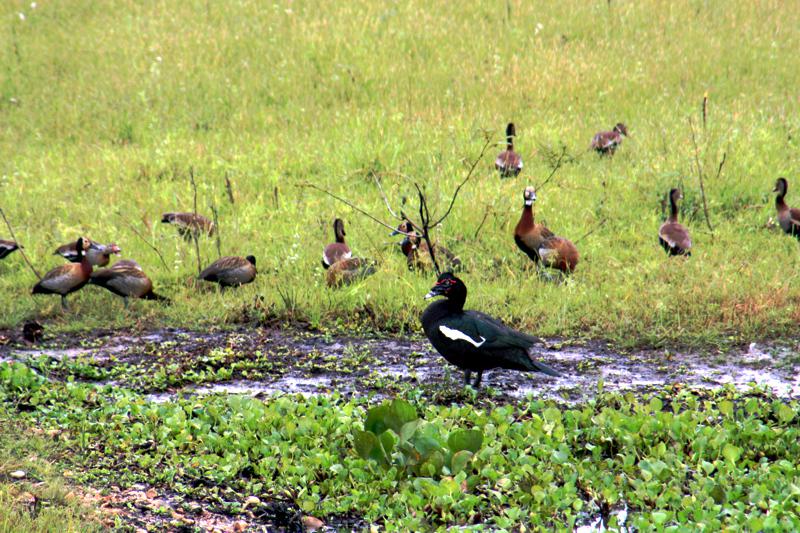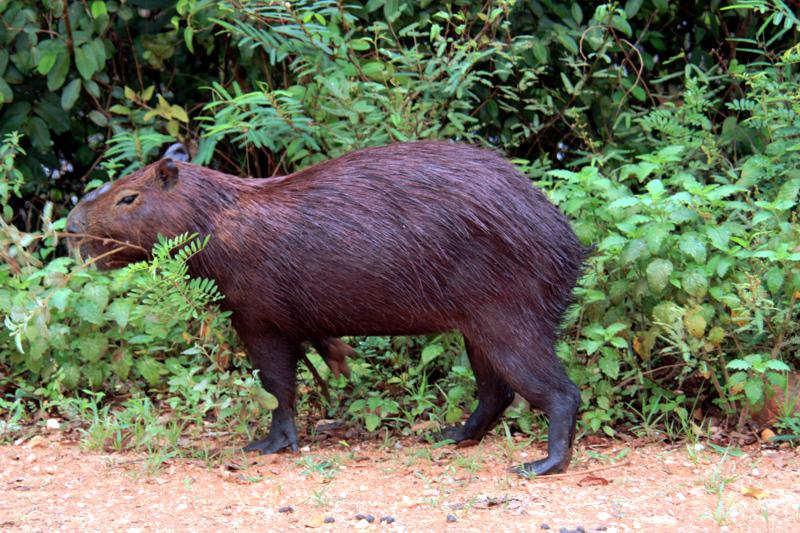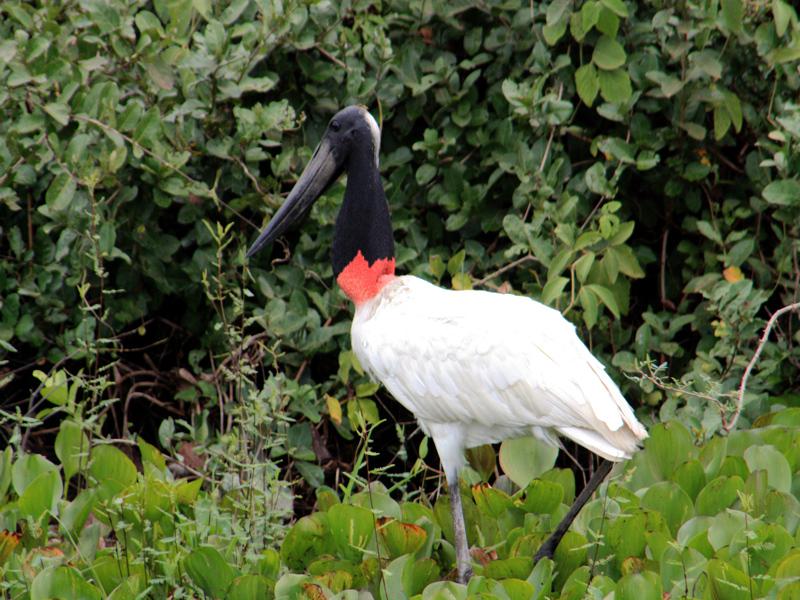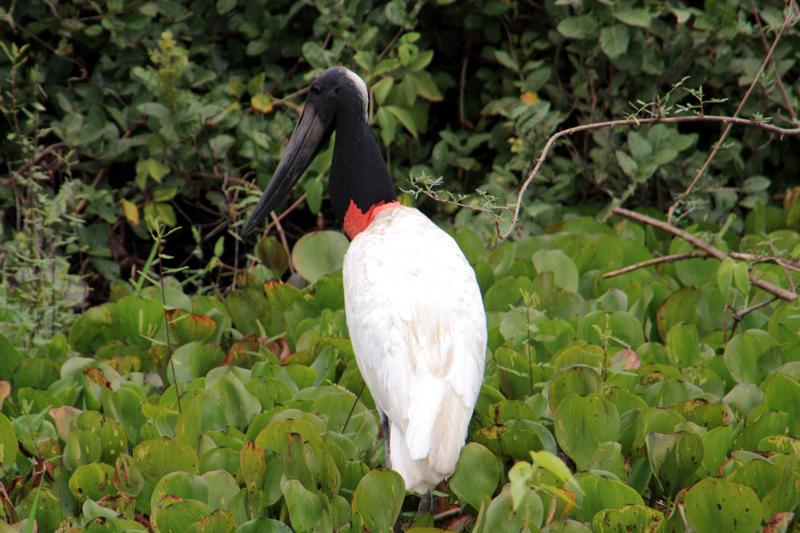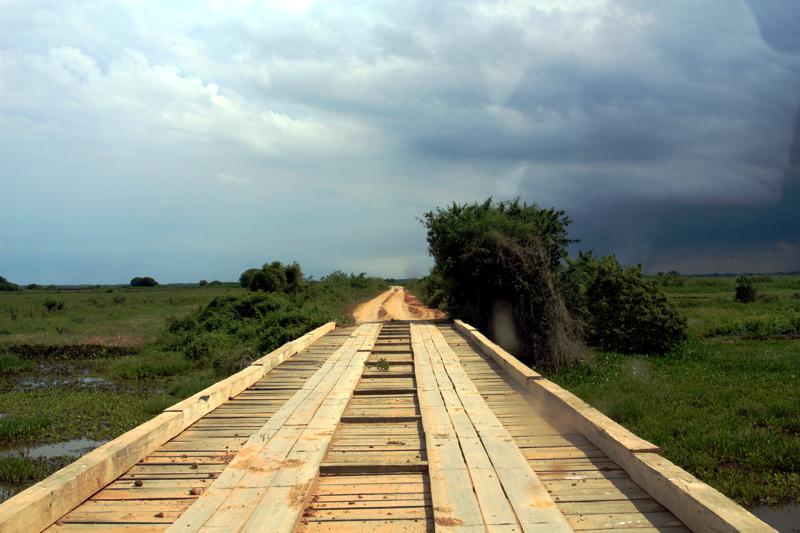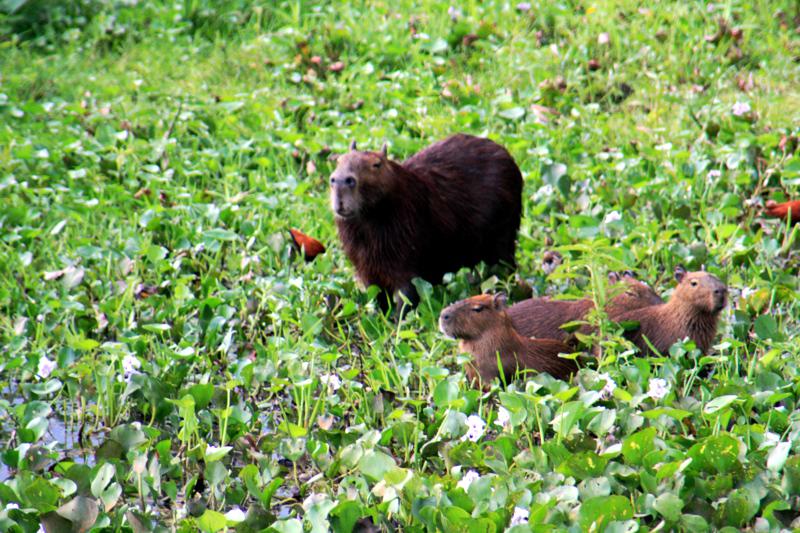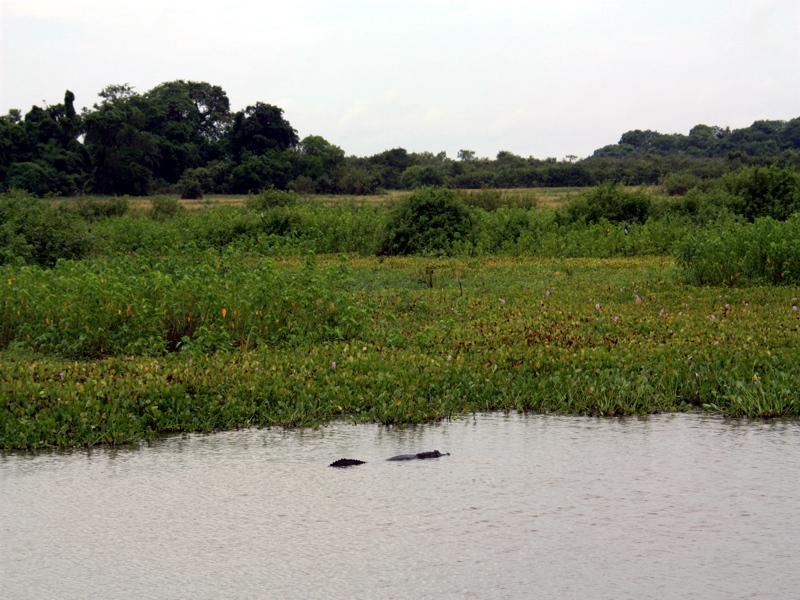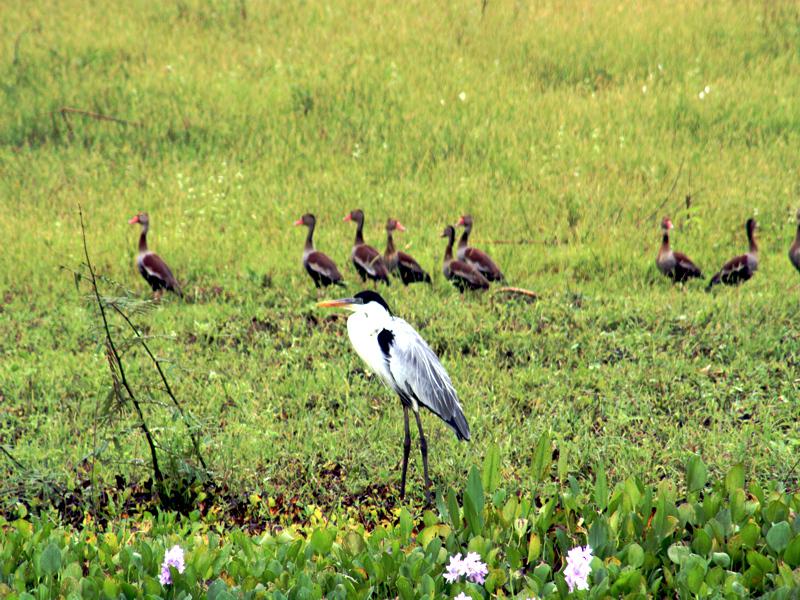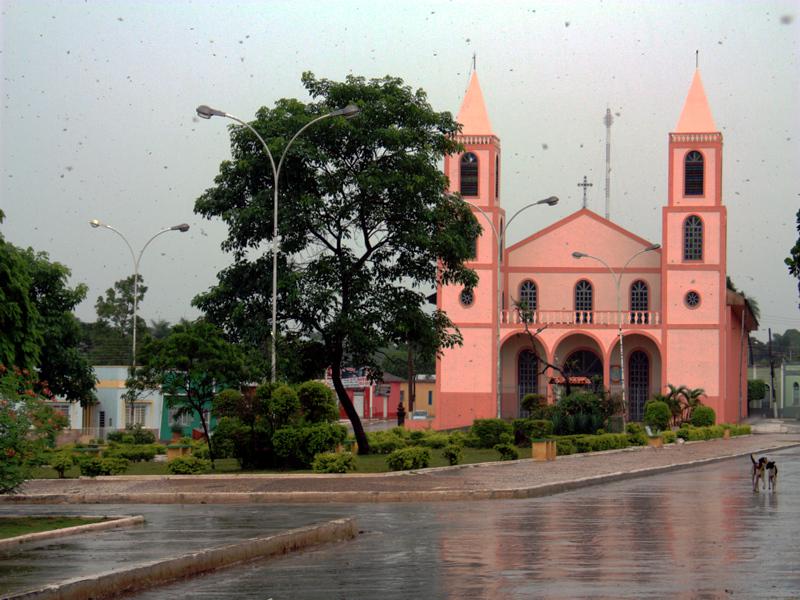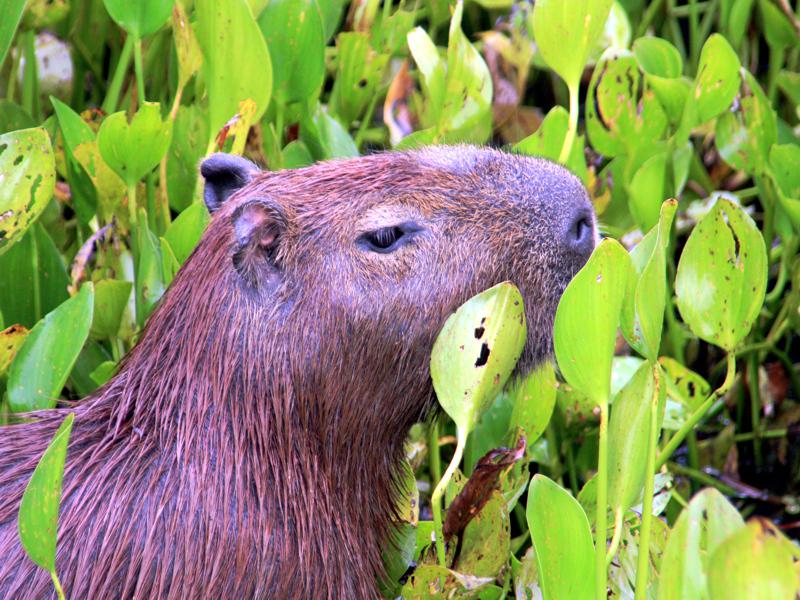Pictures of: Pantanal - Brazil
Location map
Airports
Hotels and other Accommodation
World Nomads
The Travel Insurance with the largest coverage

The Travel Insurance with the largest coverage

Pantanal
The Pantanal is one of the largest tropical wetlands in the world, and is located mainly in the interior of the Brazilian state of Mato Grosso do Sul, but it extends in Mato Grosso and parts of Bolivia and Paraguay. It extends over an estimated area between 140,000 and 195,000 square kilometers (54,000 and 75,000 sq miles).
There are several sub ecosystems, each with distinct water, geological and ecological characteristics;
About 80% of the Pantanal's floodplains are submerged during rainy seasons, feeding an amazingly diverse biological collection of aquatic plants and helping to support a dense set of animal species.
The name "Pantanal" comes from the Portuguese word Pântano.
The Pantanal is accessible through four major regions: Campo Grande, Mato Grosso do Sul, in the south, Cuiabá, Mato Grosso, in the north, Coxim, Mato Grosso do Sul in the east and Corumbá, Mato Grosso do Sul in the west.
Cuiabá and Campo Grande are the capitals of their respective states and have large international airports.
The Pantanal is often described as the largest swamp in the world. In the center of the South American continent, it is a flat basin that drains water (and attracts fauna) from the surrounding plateaus. For more than 100 years, the only human activity has been low-level livestock. Cattle breeding in the Pantanal, however, is so uncompetitive because of ever-changing landscapes that in recent years many farms have been reopened as tourist lodges.
There are several sub ecosystems, each with distinct water, geological and ecological characteristics;
About 80% of the Pantanal's floodplains are submerged during rainy seasons, feeding an amazingly diverse biological collection of aquatic plants and helping to support a dense set of animal species.
The name "Pantanal" comes from the Portuguese word Pântano.
The Pantanal is accessible through four major regions: Campo Grande, Mato Grosso do Sul, in the south, Cuiabá, Mato Grosso, in the north, Coxim, Mato Grosso do Sul in the east and Corumbá, Mato Grosso do Sul in the west.
Cuiabá and Campo Grande are the capitals of their respective states and have large international airports.
The Pantanal is often described as the largest swamp in the world. In the center of the South American continent, it is a flat basin that drains water (and attracts fauna) from the surrounding plateaus. For more than 100 years, the only human activity has been low-level livestock. Cattle breeding in the Pantanal, however, is so uncompetitive because of ever-changing landscapes that in recent years many farms have been reopened as tourist lodges.
Tourism
Eclipsing even the Amazon, in the width and quantity of wildlife observation opportunities, the Pantanal, which extends for hundreds of kilometers of Central-West Brazil and parts of eastern Paraguay and Bolivia, is one of the most diverse ecosystems of the planet (and the world's largest freshwater wetlands).
The numerous water wells and open fields that make up the landscape of this unique region are the perfect habitat for hundreds of species of mammals, reptiles, butterflies and birds. Ariranhas, sucuris, iguanas, jaguars, pumas, crocodiles, monkeys, anteaters and are just some of the many animals that can be found here.
There are more species of birds in the region than in North America and more species of fish than in Europe. The immense variety of life, translated in constant movement of forms, colors and sounds, is one of the most beautiful spectacles of the Earth. Due to this alternation between dry and wet periods, the landscape is never the same.
The most famous eco tourism tours are: trails, horseback riding, livestock management, observation of the flora and fauna of the Pantanal, boat trips, riding cars, canoeing, sport fishing, photo safari, among others.
The numerous water wells and open fields that make up the landscape of this unique region are the perfect habitat for hundreds of species of mammals, reptiles, butterflies and birds. Ariranhas, sucuris, iguanas, jaguars, pumas, crocodiles, monkeys, anteaters and are just some of the many animals that can be found here.
There are more species of birds in the region than in North America and more species of fish than in Europe. The immense variety of life, translated in constant movement of forms, colors and sounds, is one of the most beautiful spectacles of the Earth. Due to this alternation between dry and wet periods, the landscape is never the same.
The most famous eco tourism tours are: trails, horseback riding, livestock management, observation of the flora and fauna of the Pantanal, boat trips, riding cars, canoeing, sport fishing, photo safari, among others.
Gastronomy
The cuisine offered to Pantanal visitors is the best available on farms in the region. The menus are inspired by Pantanal recipes and are rich in local ingredients such as freshwater fish, fine meats and fruits from the Cerrado, such as pequi, graviola and guavira.
At breakfast, homemade breads, cheeses and cold cuts are accompanied by freshly made eggs and omelets and local fruit juices. Assorted lunch buffets feature at least one local dish along with more elaborate options. At dinner, every day the menus are different consisting of hot dishes, salads, and desserts.
There are lots of recipes using ingredients such as meats typical of the region, such as cattle, goats, sheep and pigs.
The traditional Pantanal barbecue, with special cuts of meat served in large wooden stakes, and prawns, dried meat, especially during the cold nights, is very tasty and highly valued by the local population.
At breakfast, homemade breads, cheeses and cold cuts are accompanied by freshly made eggs and omelets and local fruit juices. Assorted lunch buffets feature at least one local dish along with more elaborate options. At dinner, every day the menus are different consisting of hot dishes, salads, and desserts.
There are lots of recipes using ingredients such as meats typical of the region, such as cattle, goats, sheep and pigs.
The traditional Pantanal barbecue, with special cuts of meat served in large wooden stakes, and prawns, dried meat, especially during the cold nights, is very tasty and highly valued by the local population.
Climate
The Pantanal is located in an area of tropical and humid climate. The average air temperature is 24 ° C.
The annual amount of rain is 1,000 to 1,250 mm, which is not much compared to the neighboring states of Mato Grosso and Mato Grosso do Sul. In these states the same index shows 1,500 millimeters per year, which makes the Pantanal a region semi-arid.
At low tides between May and June, while water is being carried by the Paraguay River, a new life develops in nature: this is the time when it is particularly interesting, both in water and on land. Watching animal families is one of the best experiences and photo motifs.
The temperature at this point is low.
With the dry season between July and October, the climate is more pleasant in the Pantanal. The rivers return to their normal size and roads and paths are again accessible, and there are also no mosquitoes. All kinds of animals can be seen along the rivers. Temperatures drop to about 10 ° C overnight.
The rainy season is between November and January, and with the water level rising, fish migrate upstream to spawn. The amount of mosquitoes - which is quite insignificant at other seasons - decreases considerably, as soon as the first rain begins to fall. However, this is particularly the good weather to enjoy the landscape, which flourishes. The fauna lives a little more withdrawn during this time, since now there is abundance of water, even in the more remote corners. The temperature rises to approximately 37 ° C.
The annual amount of rain is 1,000 to 1,250 mm, which is not much compared to the neighboring states of Mato Grosso and Mato Grosso do Sul. In these states the same index shows 1,500 millimeters per year, which makes the Pantanal a region semi-arid.
At low tides between May and June, while water is being carried by the Paraguay River, a new life develops in nature: this is the time when it is particularly interesting, both in water and on land. Watching animal families is one of the best experiences and photo motifs.
The temperature at this point is low.
With the dry season between July and October, the climate is more pleasant in the Pantanal. The rivers return to their normal size and roads and paths are again accessible, and there are also no mosquitoes. All kinds of animals can be seen along the rivers. Temperatures drop to about 10 ° C overnight.
The rainy season is between November and January, and with the water level rising, fish migrate upstream to spawn. The amount of mosquitoes - which is quite insignificant at other seasons - decreases considerably, as soon as the first rain begins to fall. However, this is particularly the good weather to enjoy the landscape, which flourishes. The fauna lives a little more withdrawn during this time, since now there is abundance of water, even in the more remote corners. The temperature rises to approximately 37 ° C.
Other tourist destinations in:
Brazil
Brazil
Other world tourist destinations
Why to book with TRAVEL CLUBE
The best prices
Our partnerships with the world´s largest operators offer research on the best market prices.
More options
At Rotas Turisticos you can book the hotel, buy the air ticket, book the transfer from the airport to the hotel and vice versa, book the local excursions, rent the car, take travel insurance and consult the places to visit and where to go.
Holiday Tips & Destinations
Hundreds of holiday destinations with all the options that allow you to easily choose the destination that best suits your dream vacation.
TRAVEL CLUBE
Links

